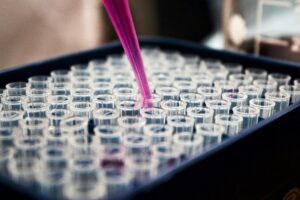Over the years, the field of analytical techniques has witnessed the development of numerous methods tailored for specific purposes or goals. In the contemporary scientific landscape, researchers have at their disposal a diverse array of analytical tools. However, the integration of these methods has given rise to a new frontier—hyphenated techniques.
In 1980, Thomas Hirschfield introduced the term “hyphenation,” which denotes the integration of multiple methods to tackle complex analytical challenges. Hyphenated techniques, as coined by Hirschfield, entail combining a separation technique with spectroscopic detection technology to enhance analytical capabilities.
Separation techniques encompass a range of methods, including gas chromatography (GC), liquid chromatography (LC), high-performance liquid chromatography (HPLC), and capillary electrophoresis (CE). These techniques are employed to separate components within a sample substance, facilitating the identification of each specific component.
Conversely, spectroscopic detection technology is utilized to analyze molecular structure, enabling researchers to calculate the molecular weight of various components. This, in turn, allows for the quantification of each component within a sample, providing a more comprehensive understanding of its composition.
Various hyphenated techniques have emerged as a result, leveraging different separation and detection methods. Commonly used hyphenated techniques include GC-MS, LC-MS, LC-IR, GC-IR, LC-NMR, CE-MS, and GC-UV. You can explore the capabilities of the GC-UV analytical method further here. Notably, the combination of separation and detection is not limited to two techniques, with more complex setups like LC-MS-MS and LC-NMR-MS employing multiple detection methods. Additionally, approaches such as LVI-GC-MS and SPE-LC-MS incorporate sample preparation and purification into chromatographic analyses.
The benefits of hyphenated techniques are manifold. By merging the capabilities of separation and quantification, these techniques facilitate more in-depth analysis, addressing complex problems. Advantages include improved sample throughput, enhanced reproducibility, faster analysis with a higher degree of automation, and simultaneous occurrence of separation and quantification. The closed system design reduces the risk of contamination. This intricate approach showcases the versatility and power of hyphenated techniques in advancing analytical capabilities.




